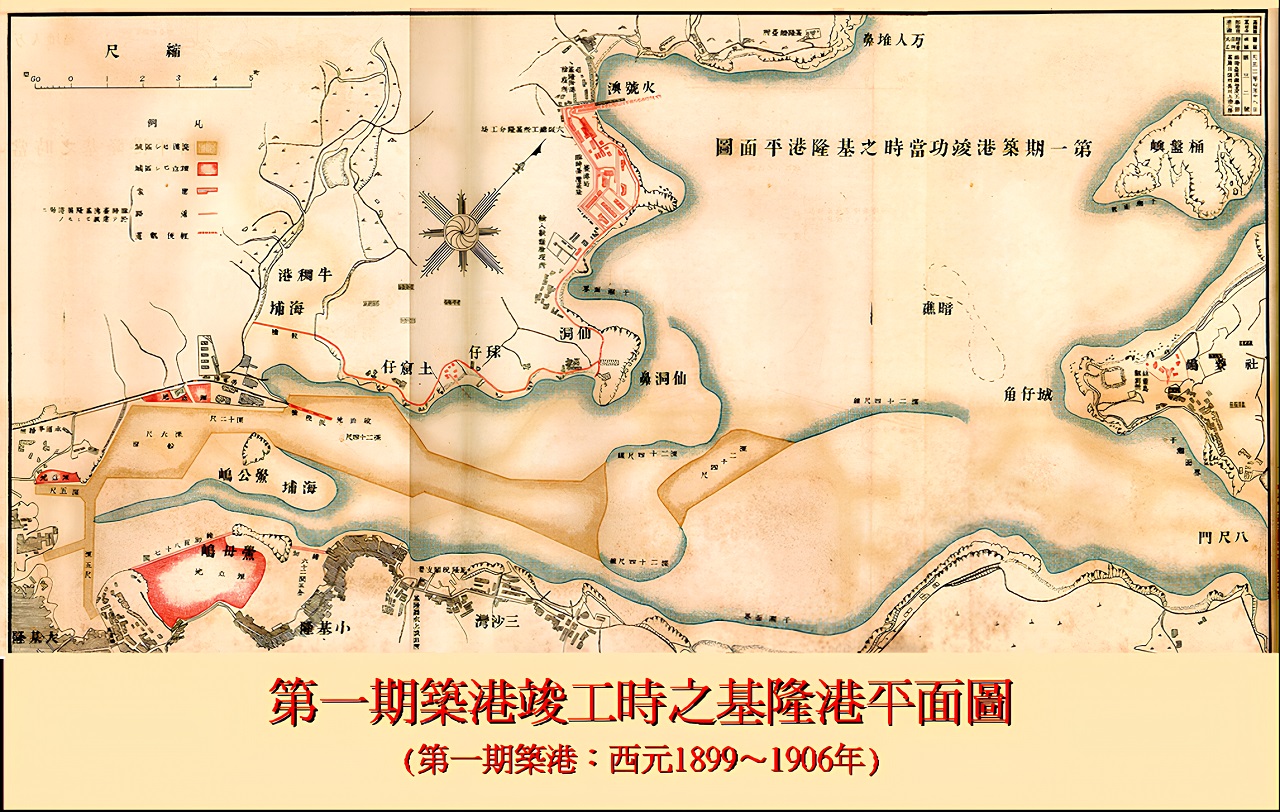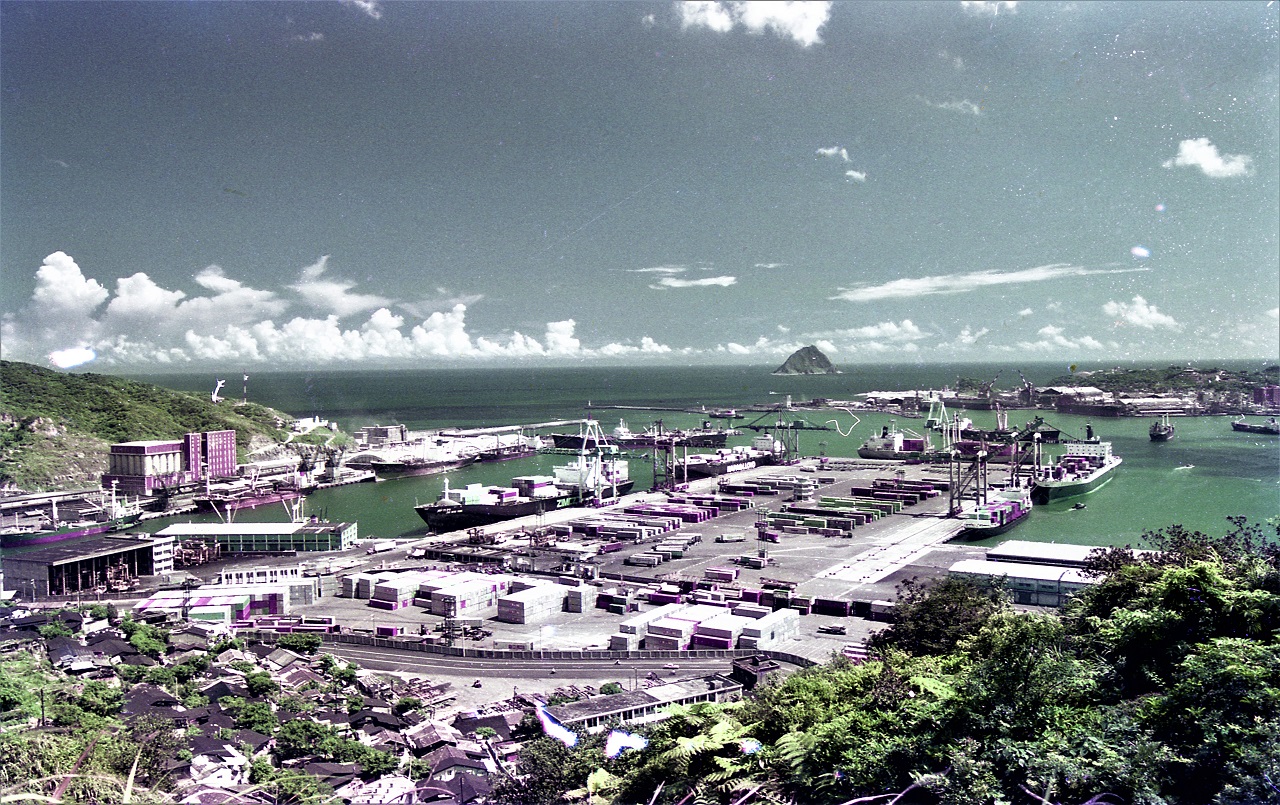Since Taiwan opened its ports for foreign trade in the 1860s, port development has flourished. Keelung Port, with its natural harbor and prime geographical location, officially opened on August 19, in 1863 to become a critical global transportation hub. Under the guidance of Taiwan Governor Liu Mingchuan, efforts were made to connect Keelung to Taipei by railway. Channels were dredged and an inner harbor was built on reclaimed land.Liu Mingchuan submitted a proposal to the Qing court to develop Keelung Harbor and Lin Weiyuan, Taiwan’s richest man was commissioned to oversee the project in 1886, which is recognized as the port’s founding year. During the Japanese colonial period, Keelung Port was positioned as the transportation gateway between Taiwan and Japan. Between 1899 and 1944, five phases of port construction were planned. Although the fifth phase was left unfinished due to the Pacific War, this construction laid a significant foundation for Keelung Port’s future development.

During WWII, Taiwan’s maritime transportation was heavily impacted by the war, resulting in damage to ports and vessels and a halt to maritime development. After the war, the Nationalist Government arrived in Taiwan and established Keelung Harbor Bureau under the Taiwan Provincial Government’s Transportation Department on November 9, 1945. Keelung Harbor Bureau’sprimary tasks were removing sunken ships within the port, dredging river channels, and restoring port infrastructure. At the time, Keelung Harbor Bureau’s responsibilities included port affairs and maritime administration , while customs duties were assigned to the Taipei Customs under the Ministry of Finance. As Taiwan’s shipping industry grew, demand for maritime cargo transportation increased. In response, the Tamsui Engineering Department was established on February 1, 1947 (restructured as an office on October 16), followed by the Suao Engineering Department on February 6, 1947 (later reorganized as an office in 1948). To support local economic development, the Hualien Harbor District, originally under Keelung Harbor Bureau , was elevated to Hualien Harbor Bureau on September 1, 1963, and opened as an international port. Following the completion of restoration efforts, construction on the expanding Keelung Port began including improving east wharfs and developing west outer harbor area as well as strengthening port facilities. With the rise of container shipping, Keelung Port began constructing its first container terminal in 1969, continually upgrading and building new container docks, and creating connecting routes between the port and highways on both the east and west wharfs, strengthening the s
.jpg)
After the 1990s, Keelung Port’s overall throughput began to decline as a result of intense domestic and international competition, limited space within the port area, proximity to the city and mountains restricting expansions, and water depths that prevented the docking of large container vessels. After 1999, stevedoring operations were privatized. The container terminal operations at East 8 to 11 Wharfs and West 19 to 21 Wharfs have been yielded to the private enterprises since 2002 and 2009 to improve the efficiency. Also, the port gradually opened to tourism, collaborating with local governments and industries to promote tourism development. The establishment of a free-trade zone capitalized on tax-free advantages, elevating competitiveness for the companies with the need of exportation and transit trade. Keelung Port also attracted major cruise operators such as Star Cruises, Princess Cruises, Royal Caribbean, and Costa Cruises, positioning itself as a home port for cruise liners and winning the “Asia’s Best Cruise Home Port” award in 2017. In 2019, Keelung Port achieved a peak of 595 cruise calls, servicing 946,000 passengers. Although the pandemic caused a sharp decline in passenger volume, Keelung Port responded by investing in the expansion and renovation of passenger terminals and offering substantial incentives to attract cruise operators. In partnership with the Culture and Tourism Bureau, the port conducted promotional campaigns in Europe, the U.S., and Japan. These efforts earned the port the “Special Achievement Award” in 2023, with a goal of surpassing one million annual passengers by 2025. Through the Taiwan International Ports Corporation (TIPC)’s collaboration with central and local tourism authorities, Keelung Port now welcomes more cruise brands, fly-cruise passengers, and international travelers, solidifying its role as a major player in Asia’s cruise tourism market

In 2012, the Ministry of Transportation and Communications implemented a separation of government and enterprise, corporatizing all port authorities and merging them into the state-owned TIPC. Consequently, the original Keelung Harbor Bureau was reformed as Port of Keelung, TIPC. Despite this organizational shift, TIPC remains committed to the development of Keelung Port. Container terminals, general cargo terminals as well as passenger terminals are dedicated to accommodating the domestic and international vessels, cargoes and passengers.
In the future, TIPC will continue to focus on maximizing and optimizing Keelung Port’s resources to support its operational growth and development.
.jpg)